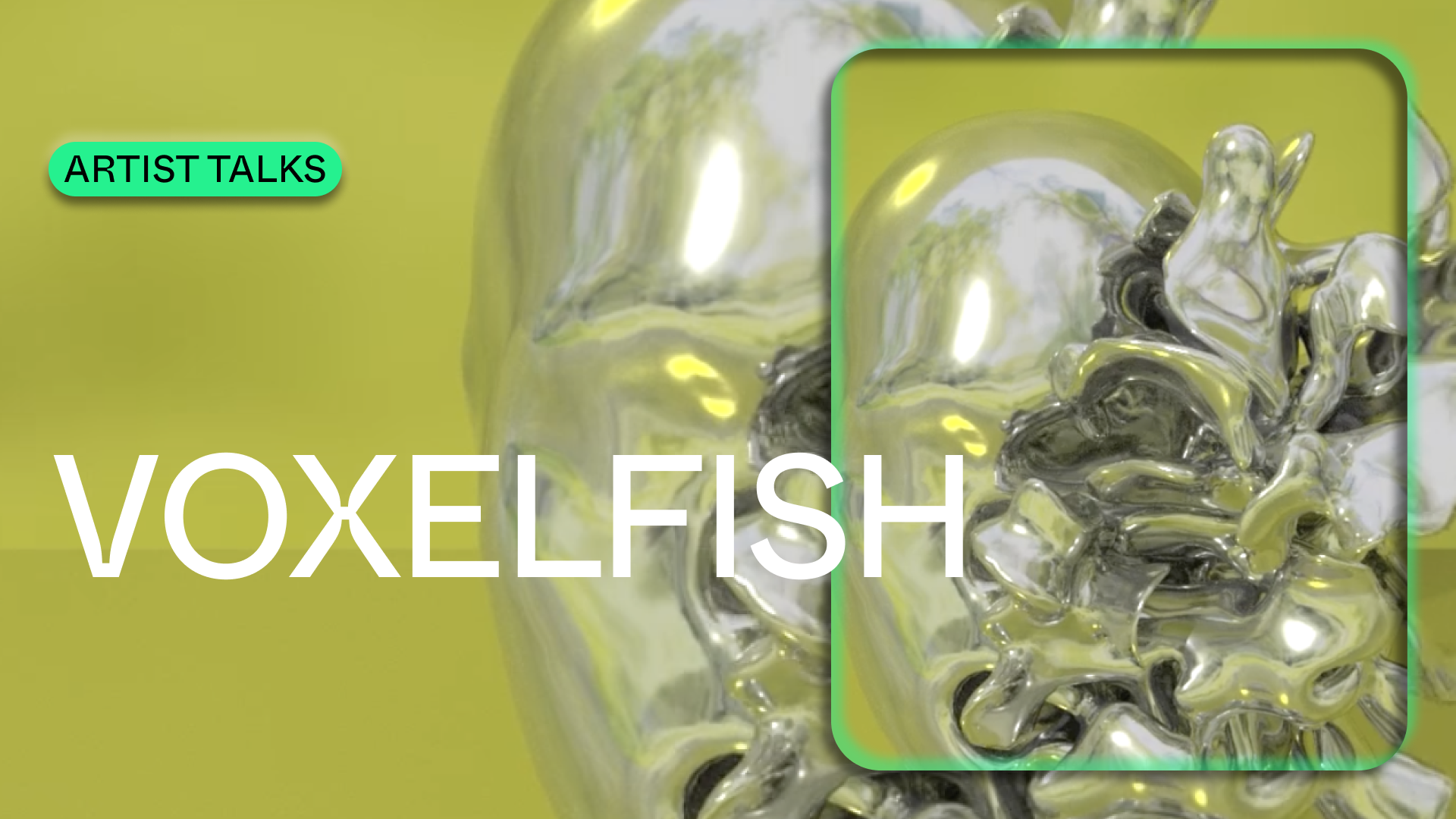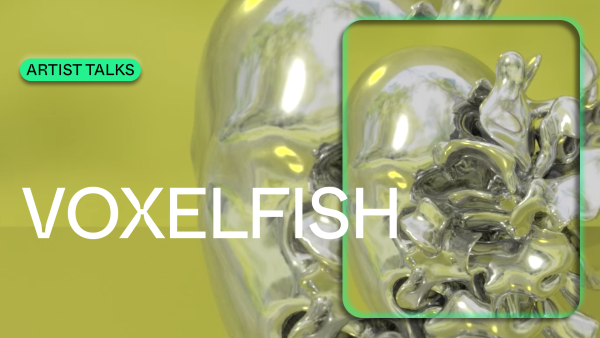Artist Talks: Voxelfish On Generativity And Transformation.


The Palm Creator Engagement Program recognizes artists as the foundation of the new creator economy. Rooted in community, the program has, at its core, the goal of elevating and amplifying the brilliant works of artists within the Palm Ecosystem.
In January’s Palm Creator Engagement Program instalment, Palm NFT Studio spotlighted Voxelfish: a London-based architect, data artist, and teaching fellow. The digital art of Voxelfish feeds primarily from quantitative inputs such as data, algorithms, environment, sensors, archives, and APIs. The scale of work ranges from urban to micro and the algorithms behind them range from sonic to biological. Voxelfish believes in simulations and thinks to represent reality is to begin to transform it.
Voxelfish’s artwork incorporates the use of data to mainly use as input while discussing what type of data is presented as an output. The very first form of data is usually a number or a coordinate or just a value, a decibel value of sound data for instance. “I’ve always wanted to use Houdini. I’m a digital artist myself, but it’s so damn complicated,” says Voxelfish. I think that’s the richness of the software, that no one can actually ever say that they’re an expert in every single side of Houdini. That’s probably impossible and not necessary as well, I think.
“What I do as an architect kinds of feeds into my digital work as well. If I teach to my students, I know it becomes an input for my next art piece.” – Voxelfish
Would you feel that your work would be different, without this background of yours?
I think it definitely has a huge impact on my art. My architectural background (vice-versa as well), and me as digital art influences my architectural world too. That’s why I think I always define my work as an inter-scalar thing, like spreading across multiple scales. Sometimes I fiddle with biological algorithms like growth algorithms that might go into microscopic scale, but sometimes I’m sound mapping an entire kind of neighborhood, but I use similar approaches and similar software to visualize it. Some of my artwork is actually driven by some of the architecture pieces I produce. A sonic for instance, a space that we can physically use might become an art piece, which is just for pleasuring the eyes basically. The generative process of producing was quite similar between the architectural piece and the digital art piece.
How do you envision API essentially being utilized by the blockchain in particular?
It’s quite interesting because it really is about how open-source the data is. For instance, Instagram is like a black box. It’s so hard to get any data out of it, even anonymous data. What we do with API is really about the openness and the richness of the data. Many API-based applications basically radiate the API, broadcasting the API through blockchain and using that anonymity to actually make things more open. So you can basically, as a platform, broadcast your API (whatever data you have as an API), and broadcast it more freely through blockchain because you’re making sure that it’s anonymous.”
“The input is ever-changing, meaning that the output is ever-changing as well.”
If you are a kind of centralized platform, it’s quite a difficult decision to broadcast your thing through an API, output, and input. But in general, using API is quite interesting because it kind of distorts the role of the artist in the whole art-making process. It’s quite similar in architecture as well. It’s almost like we’re playing a bit like a God in this whole thing. We do what we want and we do what we think is good and good-looking. But when you’re working with API, it’s like an unpredictable data source, basically ever-changing and ever-evolving as a data source. It suddenly takes you as a designer or an artist out of the equation. The input is ever-changing, meaning that the output is ever-changing as well. So what’s been happening on these like generative art NFT pieces, mostly based on Art Blocks, for instance, is that they’re using the transaction hash as an input. So it’s not that different from APIs.
What is your perspective on the mainstream frameworks of NFT structures (PFP projects, collectibles, and 1/1 NFTs)?
I think my initial kind of reaction to almost every new advancement is quite skeptical initially; like I question a lot. So for that reason, I’m testing the waters and seeing the reactions of everything. I’ll just try to use the technology itself as an art-making process rather than using it as a marketplace or as a transaction method. So it’s not something that replaces PayPal or Amazon, from my point of view; it’s more like it might be something that replaces Photoshop or Houdini at some point. I see it all as a tool.
Browse more Voxelfish on:







